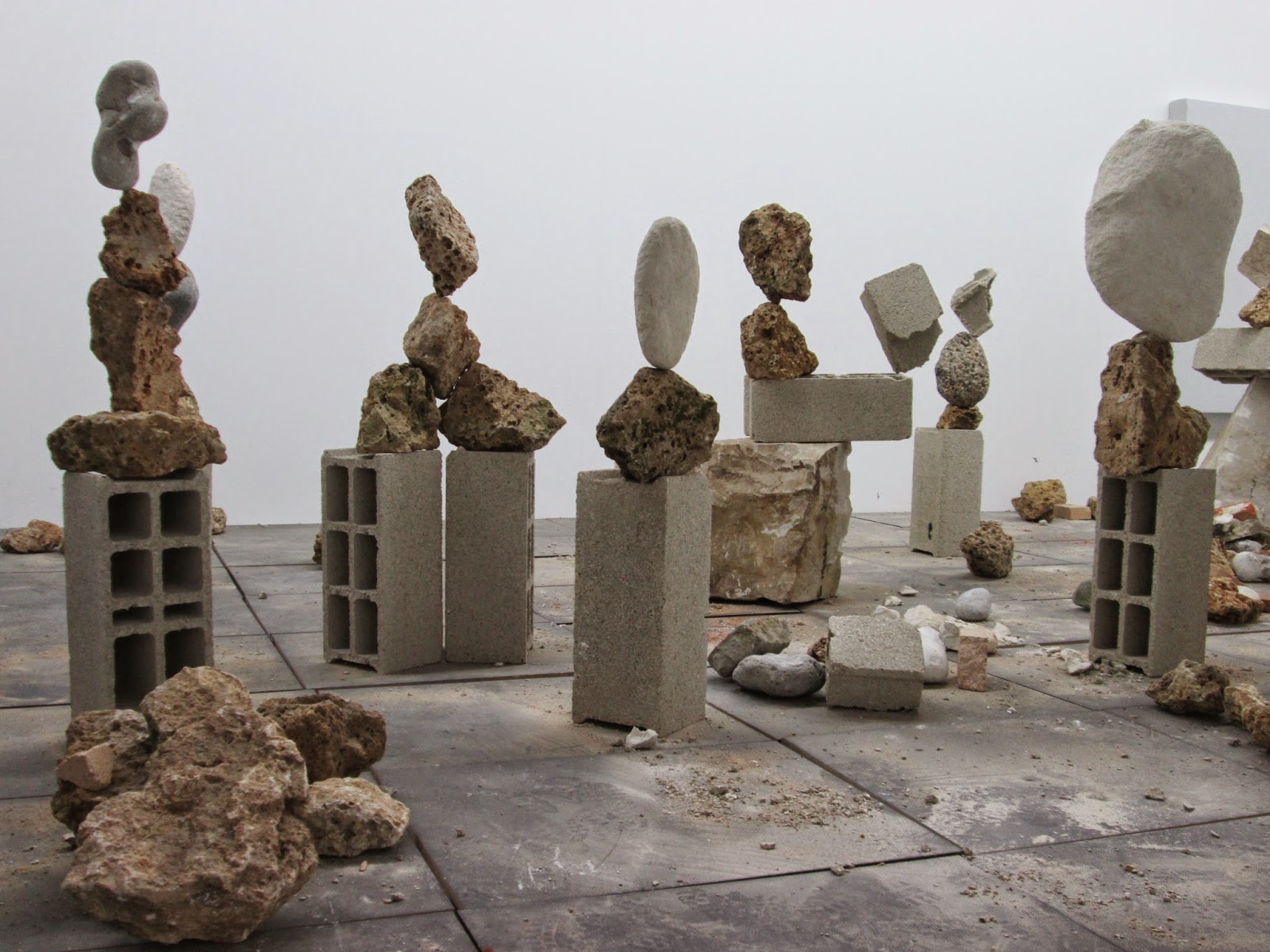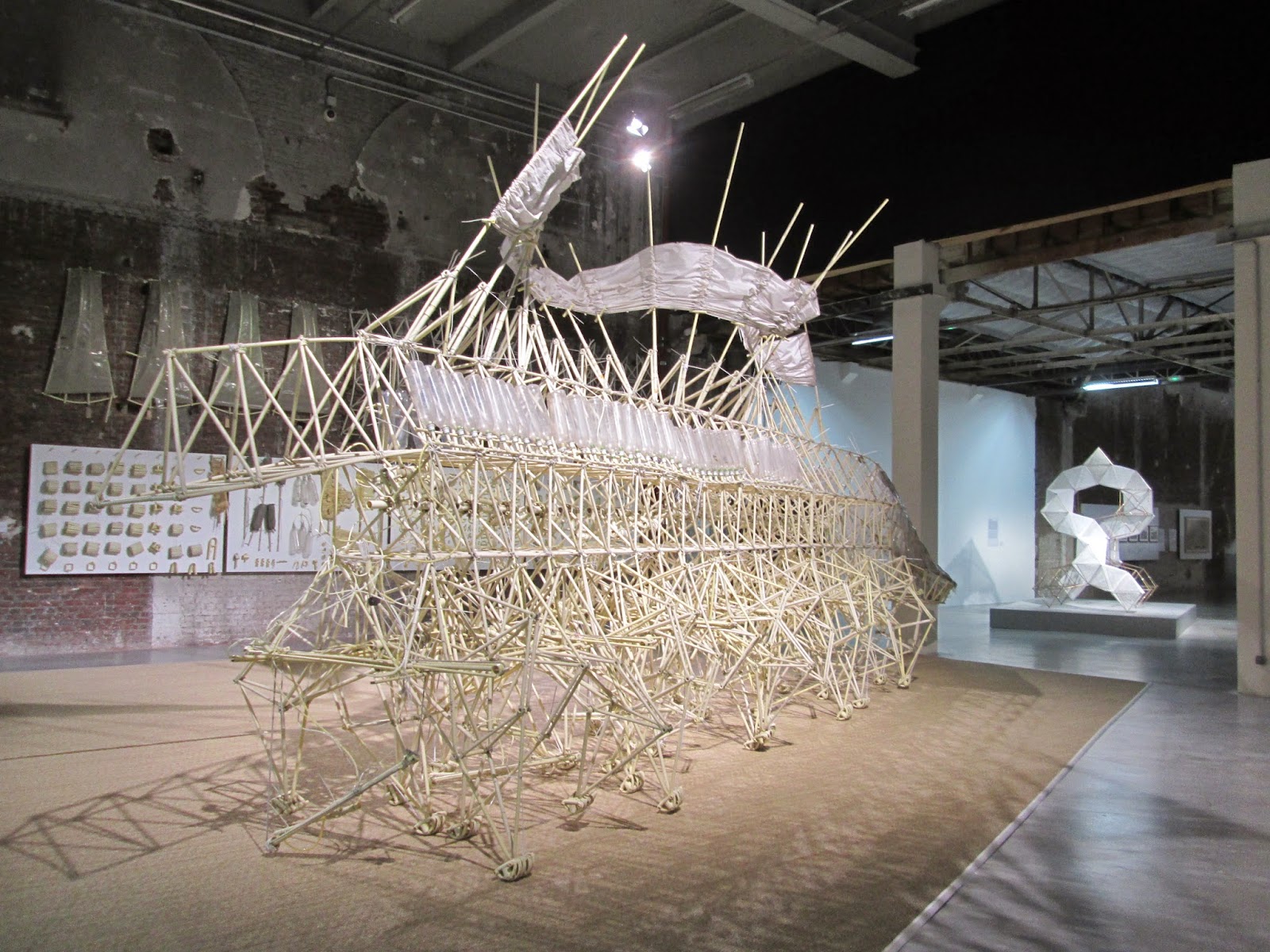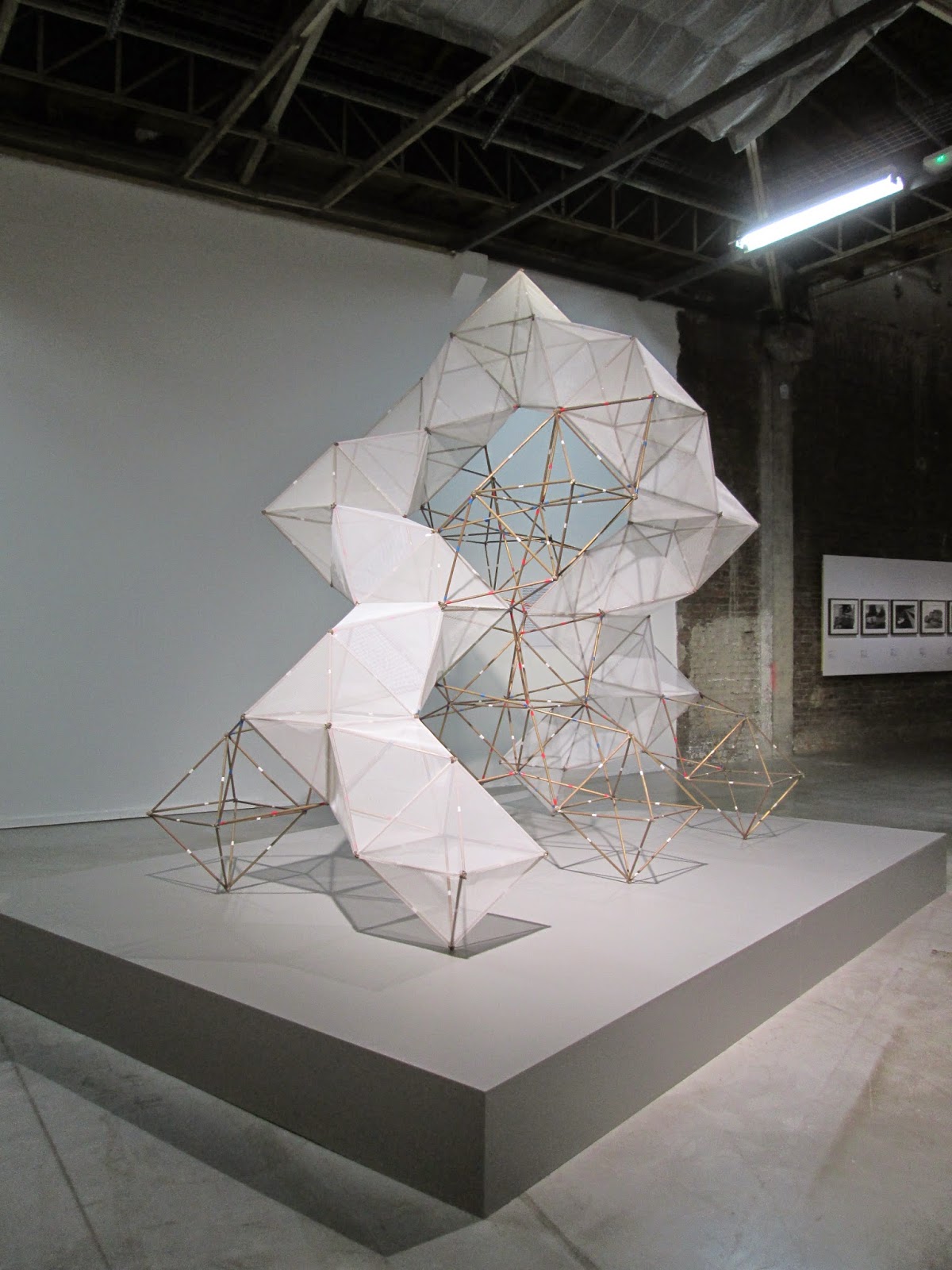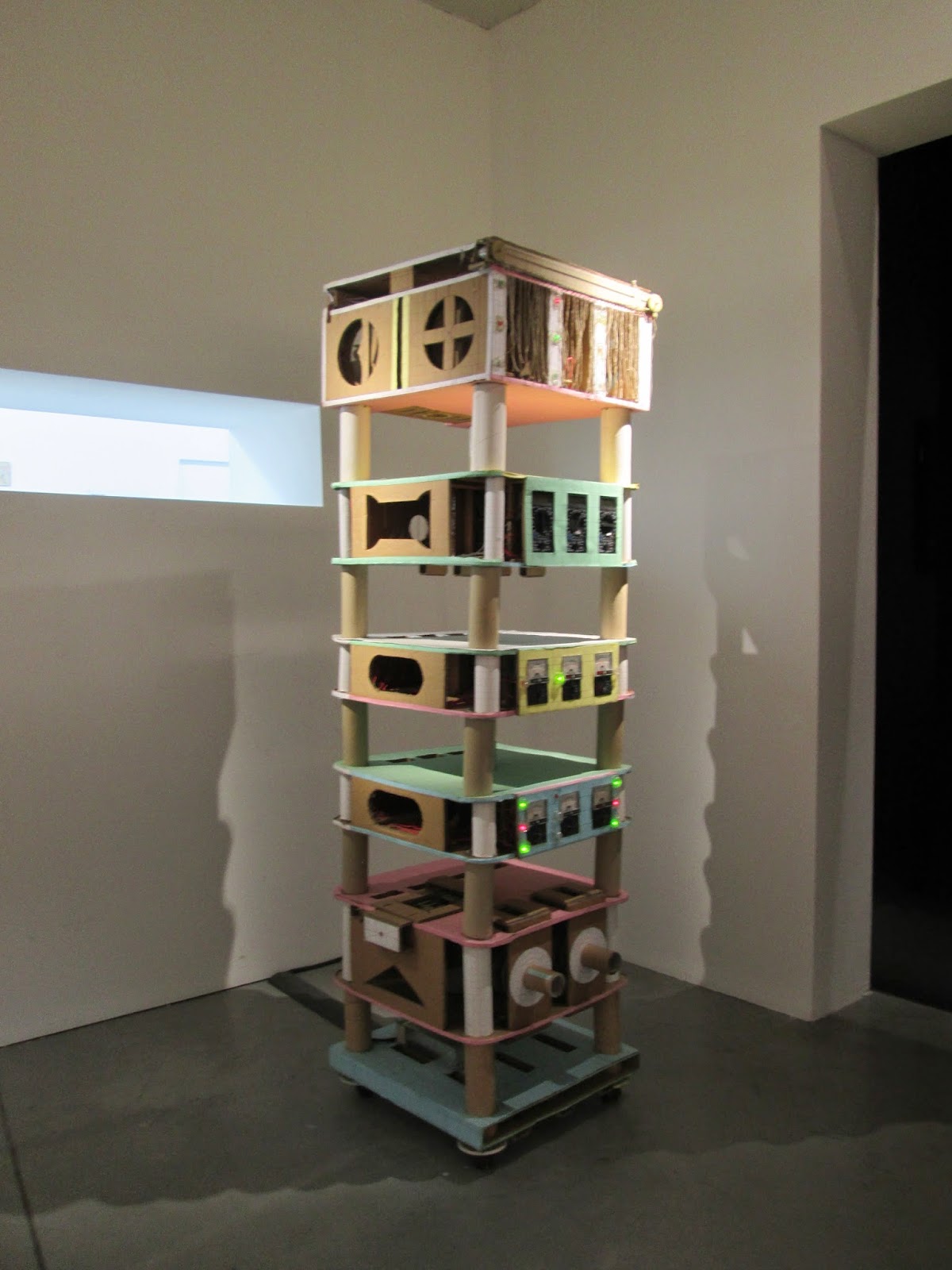Le Bord des Mondes at Palais de Tokyo, Paris (France) (2015)
“Can one make works of art which are not ‘of art’?”. The exhibition Le Bord des Mondes – taking place from 18th February to May 17th at Palais de Tokyo in Paris – opens with Marcel Duchamp’s question, to which it attempts to give answers through the staging of the production and/or reflections of sui generis artists (from time to time visionaries, tinkerers, poets) whose work originates from different disciplinary fields and/or different perspectives of investigation then giving outputs indeed potential-rich and poetic.
 |
| Bridget Polk, “Balancing Rocks” |
 |
| Bridget Polk, “Balancing Rocks” |
The American Bridget Polk, whose work opens the exhibition, sits waiting for parts of his sculptures to collapse and need to be rearranged: the “Balancing Rocks” – a result of the three stages of meditation, performance and production in which she articulates the production process – are in fact impossible compositions of cement bricks, porous stones smoothed by the wind and rounded stones shaped by the water of the rivers, precariously balanced one on top of the other by means of very small reciprocal unstable footholds and unlikely distribution of volumes.
Meeting point of natural world with cultural one, they symbolically demonstrate that in life you can try to organize chaos, but the balance achieved will always be ephemeral, as subjected not only to our own, but also to other elements of the context.
A little further on, the series of photographic prints related to “Topography of Tears” by Rose-Lynn Fisher shows the artist’s research on the structure of tears in relation to emotional states for which they were cried, and leads to another room where there’s the projection, on three screens, of a documentary video on ‘bird language’ spoken by the inhabitants of Kusköy, in Turkey. The language was invented in ancient times and passed down from generation to generation as the geographical location of the territory prevented the intelligibility of human language over long distances.
An attempt at human language translation into another language is also that of Laurent Dérobert, economist, who invented the “existential mathematics”, namely the transposition in mathematical formulas of feelings and sensations that affect humans.
In this way, he invents and designs equations that summarise human relationships, breakpoints and points of potential restructuring, so that the individual can find ways to reduce the distance that separates his reality from that of his ideal. For this same reason, Dérobert’s work is expressed in the exhibition also at a performative level, with daily listening of confidences and their translation into formulas.
 |
| Theo Jansen, “Animaris Umerus” |
Theo Jansen finds his strange creatures since 20 years on the beach of Scheveningen in the Netherlands. With a life on its own, according to him, these intricate shapes beings – consistent with the principles of evolution and genetics – consist of insulating tubes and bamboo, and walk on sand moved by the windblown, towering as quiet.
When Jansen meets them, if injured, he nurses them; if dead or dismembered, he collects and classifies them according to scientific classification in biology, so that on this occasion we can see a specimen of “Animaris Umerus”, and on the walls a collection of fossils and anatomical parts of these creatures.
 |
| Carlos Espinosa, “Atrapaniebla” |
Capturing the clouds is the purpose of “Atrapanieblas” of the Chilean engineer Carlos Espinosa, who in 1960 had developed this revolutionary technique to capture moisture in desert areas, thus allowing the survival of human beings, plants and animal life in arid regions lacking rain.
From that moment, he made a gift of his invention wherever they were needed, but by 1963 UNESCO has acquired the rights and it has produced itself the atrapanieblas to give them for free wherever needed.
Jerry Gretzinger is instead an elderly American who, from that same year – 1963 – draws a map of an imaginary world of 240m² consisting of 3000 squared sheets. The imaginary world is that of an Ukraina that has nothing to do with the reality of this State, but that is just an excuse to draw and paint, by any means, houses, power plants, trains, hospitals, plains, rivers, bridges, borders.
Began to fill the empty moments in a tedious job, this practice became daily through the game that the artist plays with himself: fishing randomly, every day, a card from a deck where he has marked the operation to be done, in the time left free from caring to the farm where he lives with his family.
 |
| Jerry Gretzinger’s Map. |
 |
| Jean Katambayi, “Simultium” |
Jean Katambayi is a Congolese passionate scholar of the ‘energy’ both in terms of spiritual as physical forces ruling the planet. Born as a scholar in electronics, mathematics and computer science, he is dedicated to creating installations using poor materials such as cardboards as a base to accommodate electrical circuits and devices of all kinds. In this way the result of his work consists, on one hand, in an attempt to capture the energy of the surrounding world, on the other in to draw symbolically the attention to the situation of their own Country – as the continent where this belongs. Here, in fact, if conceived in relation to energy variable the situation shows a paradoxical imbalance in terms of resource flows-exploitation – imbalance that perfectly exemplifies the post-colonial geopolitical contradictions of modernity.
A reality that also fits into the post-colonial discourse moving it to the current culturally syncretic axis is the S.A.P.E. phenomenon that affects several African regions, but has its ‘capital’ in Brazzaville (Congo), where this movement began to develop in the 60ies.
This “elegant men’s society” celebrates an African-way dandyism in the name of beauty and elegance, where the God is the garment whom pray asking him to forgive all those who do not know how to dress and all those who do not distinguish the colours.
The exhibition, yet rich with contributions from robotics to arachnology, to aeronautics, gastronomy, culminates in a circular room whose walls exhibit photographs, drawings and monitors showing jobs, discoveries, and inventions of those forerunners at the intersection between different disciplinary fields, whose outcomes already responded to Duchamp’s opening question.
In the real itself, natural and pre-cultural, there is a beauty which scientists are exposed on a daily basis, or may, from time to time, discover with their research, as well as in the works or in the inventions of human beings structures are created in which balances, compositions and rhythms can resonate in the soul of the spectators. This way, the provoke emotion, cause upheaval, attraction, repulsion, involvement – or move their senses, first goal of a practice that would define itself as ‘art’.
Le Bord des Mondes is then this: not a border, but a porous frontier – a space between the fields of human thought, feeling, discovering and inventing that causes “aesthetic emotion”.
